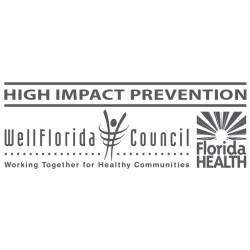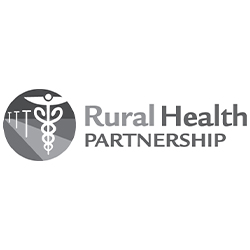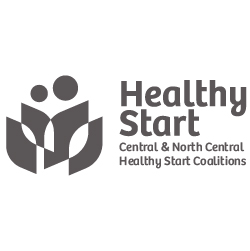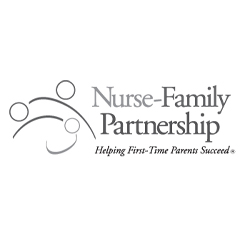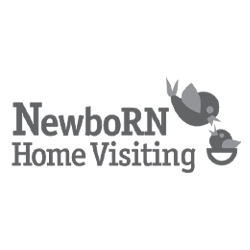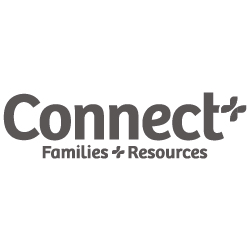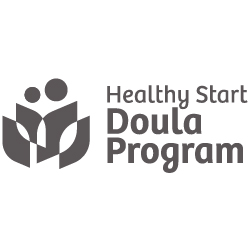A Health-y Economy
Business Report, North Central Florida
The University of Florida may be the face of Gainesville, but health care is its economic backbone.
When Dr. Kenneth Berns arrived in Gainesville in 1976, health care was like a teenager showing lots of promise but still finding itself.
Alachua County Hospital had just moved into a new cornerstone building a year earlier. The 480-bed Veterans Administration Hospital was only nine years old. North Florida Regional Medical Center, founded in 1972, was just getting off the ground.
And the 465-bed Shands Teaching Hospital? Berns says it was under probation because it had fallen short of standards for building conditions, such as width of hallways.
Even UF’s College of Medicine, in which Berns worked as chairman of the Department of Immunology and Medical Microbiology, was still in development. “We were a young medical school, only 20 years old, with a strong academic focus but limited research,” Berns says.
Jump forward 35 years and that adolescent has reached its prime and become a major part of the region’s economy.
“Gainesville is the best place for medical care between Atlanta and the South Pole.”
Dr. Kenneth Berns
Today, one out of every six area workers is in health care. And even before you add outpatient care, local hospitals account for $1.65 billion in economic activity. That’s 18 percent of Alachua County’s gross domestic product.
“Health care is one heck of an economic engine,” says Brent Christensen, president and CEO of the Gainesville Area Chamber of Commerce. “Like education, health care buffers us from extremes in the economy.”
Dr. Scott Medley, who came to Gainesville in 1979 and who’s now North Florida Regional Medical Center’s chief medical officer, agrees. “We’re fortunate that all our facilities are growing at a time when many hospitals around the country are struggling and some are closing,” he says.
There are many reasons for this success, from the scope of the services provided, to the location of three major hospitals in a city with a major medical school, to an overall commitment to quality.
Centers of Excellence
While Gainesville’s hospitals, clinics and doctors’ offices don’t generate the cheering fans that Gator sports do, they actually bring more visitors to the county.
According to a report by researchers in UF’s Food and Resource Economics Department, Shands patients and their out-of-town family members generated 1.14 million visitor days during the 2009-2010 fiscal year. Football games produced 770,000 visitor days.
Indeed, nonresidents account for 75 percent of the patient days for Shands at UF and 52 percent of patient days at North Florida Regional, according the WellFlorida Council.
The influx is driven by the fact that Gainesville’s major medical facilities are viewed as centers of excellence nationally, says Medley.
Shands HealthCare generates 40 percent of the university’s revenue. It’s flagship, Shands at UF, provides highly specialized care for patients from the metro areas of Jacksonville, Tampa and Orlando, as well as elsewhere in Florida and across the United States.
The VA hospital, one of the busiest in the nation, serves veterans throughout North Florida and South Georgia. And North Florida Regional is recognized as the leading community hospital in a 17-county area.
An Industry that’s Wide and Deep
Out-of-town patients not only pour revenue into the local community, they also help employ the nearly 20,000 health care workers here.
Besides the three large hospitals, facilities such as Shands Vista, the Shands Rehabilitation Hospital and Select Specialty Hospital create health care jobs. Still more jobs are at dozens of doctors’ offices, outpatient surgery and testing centers, urgent care centers, alternative medicine practitioners and home health care agencies.
Also, Gainesville is the home of SantaFe HealthCare, the parent company of AvMed Health Plans, Haven Hospice and The Village.
On top of jobs directly related to health care are the biomedical spinoff companies that are generating revenue and jobs from UF medical research.
Many of the companies in Progress Corporate Park in Alachua are applying the fruits of that research. At the top of that list is RTI Biologics, an outgrowth of bone transplant technology developed at the UF Tissue Bank.
Richard Allen, one of RTI’s founders, now runs a new company named Xhale that also is developing and marketing devices that draw on UF discoveries.
Allen sees a clear reason why the medical technology business in thriving here. “We have world-class, large-scale medical research going on at UF, linked closely with forward-thinking leadership at UF that has empowered the Office of Technology Licensing to spin out as much technology as possible,” Allen says.
Some companies based on UF research generated wealth locally upon being sold. For example, pharmaceutical giant GlaxoSmithKline purchased NovaMin Technology last year for $135 million in order to market NovaMin’s toothpaste ingredient that reverses early tooth decay and reduces hot and cold sensitivity.
Health Care’s Economic Impact
Shands HealthCare, is Alachua County’s top private employer, with 6,543 full-time equivalent (FTE) employees.
North Florida Regional Medical Center is the area’s third largest ranks, behind Publix, with 1,258 FTE’s.
Shands accounts for $1.69 billion of UF’s $4.27 billion total annual revenue.
Salaries for local Shands HealthCare employees and vendors involved in health care total $1.28 billion, 37 percent of the UF total of $3.47 billion.
The $1.28 includes Jacksonville and other out-of-town Shands hospitals. I would delete this bullet.
Health-care activities of Shands and UF have an annual economic impact of $2.88 billion, while UF’s overall economic impact is $8.76 billion.
Registered nurses start at $23.25, and experienced ones average $34.15.
Pharmacists start at $38.63, and experienced ones average $52.15.
Physicians and surgeons start at $49.58, and experienced ones average $107.53.
FACT: Alachua County has 438 acute-care hospital beds per 100,000, compared to
264 statewide.
Source: Florida Agency for Health Care Administration.
FACT: Alachua County has 630 physicians for every 100,000 people, more than double the statewide rate of 301.
Source: Florida Agency for Health Care Administration.
Drawing Workers from Far and Wide Too
The local health-care industry is such a draw that a high number of employees working locally live outside Alachua County.
At Shands, 1,445 of its 8,253 employees or 17.5 percent of the workforce commute from eslewhere. For UF’s Health Science Center, which includes faculty and staff devoted to medical education and research, 1,912 of 7,640 employees live outside the county—25 percent of the workforce. North Florida Regional reports that 30 percent of its 2,200 employees live outside the county.
Josh Townsend, who works in human resources at Shands at UF, is among the health-care workers commuting from outside the county. He previously was a scheduling coordinator for a Shands home health agency in his hometown of Lake City. When that agency closed, Townsend was able to move to a similar job at Shands at UF.
“It was a no-brainer to take the job in Gainesville,” he says. “I couldn’t do what I wanted to do in Lake City.”
While working in Gainesville, Townsend completed his bachelor’s degree in sociology—with the help of Shands tuition reimbursement. With the degree, Townsend was able to move into his current job and earn a $10,000 raise.
“My wife and I are able to raise our three kids where I grew up and to enjoy living on acreage in a forested area,” he says. “I work in our employee rewards and recognition service, which is a very positive experience.”
Growth in a Down Economy
During the past three years when the construction industry has been in flux, hospital building projects have helped provide work, further helping the local economy.
The 192-bed Shands Cancer Hospital, which opened in 2009, cost $388 million, with much of that amount going into salaries for construction workers.
The VA is now building a $90 million, 226-bed addition, which will employ more than 1,000 workers through its various construction phases, according to public affairs officer Heather Frebe.
Over at North Florida Regional, the hospital is in the midst of a four-year, $120-million expansion that is being done by the local firm Charles Perry Construction.
“We’re big supporters of the Chamber of Commerce’s ‘Buy Local’ campaign,” says chief operating officer Matt Davis. “This community is our home, and we support it in a major way.”
Since North Florida is a for-profit facility (unlike Shands and the VA), it also contributes property tax and sales tax revenue. North Florida pays $2 million in property taxes and $500,000 in tangible personal property taxes annually.
Falling through the Cracks
Although Alachua County has far more doctors per capita than any other Florida county, some people still don’t receive adequate medical care.
At least 29,000 county residents don’t have health insurance, according to a Alachua County Health Needs Assessment conducted by the WellFlorida Council.
Some of these uninsured people go the emergency room when they’re seriously ill, driving up overall hospital costs, says Diane Dimperio, who chaired the study and is director of program development for the Alachua County Health Department.
To reduce unnecessary visits to emergency rooms, the Health Department is helping people find alternate treatments for health issues that don’t require ER care. It’s assisted 221 people so far, including qualifying people for Medicaid, getting them help with making Medicare co-pays or helping them obtain charity care.
“We’re focusing on people who are seriously ill and don’t have a doctor,” Dimperio says. “We’re making an impact.”
Success Breeds Success
Berns has the advantage of having worked away from Gainesville for periods of time, then returning to see great leaps forward in the health-care industry here.
He chaired the Department of Microbiology at Cornell University College of Medicine from 1984 through 1997.
When he returned to UF as dean of the medical school, collaboration between medical researchers and scientists in other disciplines was high.
“UF is the ultimate in a comprehensive university,” he says. “You have everything you could possibly need right here.”
Berns again left UF from 2002 through 2003 to serve as president and CEO of Mount Sinai Medical Center and Mount Sinai School of Medicine in New York. Now, he back as director of UF’s Genetics Institute. As he looks back over the medical community’s growth during the last 30 years, he says it’s clear health care has become a shining star for Gainesville and the nation.
“We’ve come a long way since I first came here,” he says. “Gainesville is the best place for medical care between Atlanta and the South Pole.”
Out Patient Clinics Growing Too
Thanks to medical advances and a focus on controlling health-care costs, outpatient clinics are also in growth mode in Alachua County.
Digestive Disease Associates is an example. Founded by James DeFord in 1977, the practice performs outpatient colonoscopies and endoscopies—procedures that once were reserved for hospitals. On the average day, doctors handle 45 colonoscopies and endoscopies, in the process saving patients money.
“Outpatient procedures cost 40 percent less than procedures done in the hospital,” says practice administrator Scott Johnson.
Even some treatments you’d think would have to be done in a hospital are shifting off campus, including some emergency room services.
Dr. Steven Yucht offers much of the care of an ER at his Emergency Physicians Medical Center, located on Tower Road.
Unlike urgent care centers, Yucht’s facility does various emergency surgeries, runs many types of lab tests and treats patients with chest pain who are not having a heart attack.
“I tell people that if they don’t need an ambulance, they can see us,” Yucht says. “I treated someone for kidney stones for a fraction of what the cost would have been in the hospital.”
Yucht, who had been chief of staff and an emergency room physician at Shands at AGH, created his center after that hospital closed. He built a 5,000-square-foot office complete with a suite for surgery and other procedures, and has an X-ray machine and other medical equipment generally found in an ER.
Yucht treated 3,000 patients in the first year after opening the center in January 2010.
Back to News page
